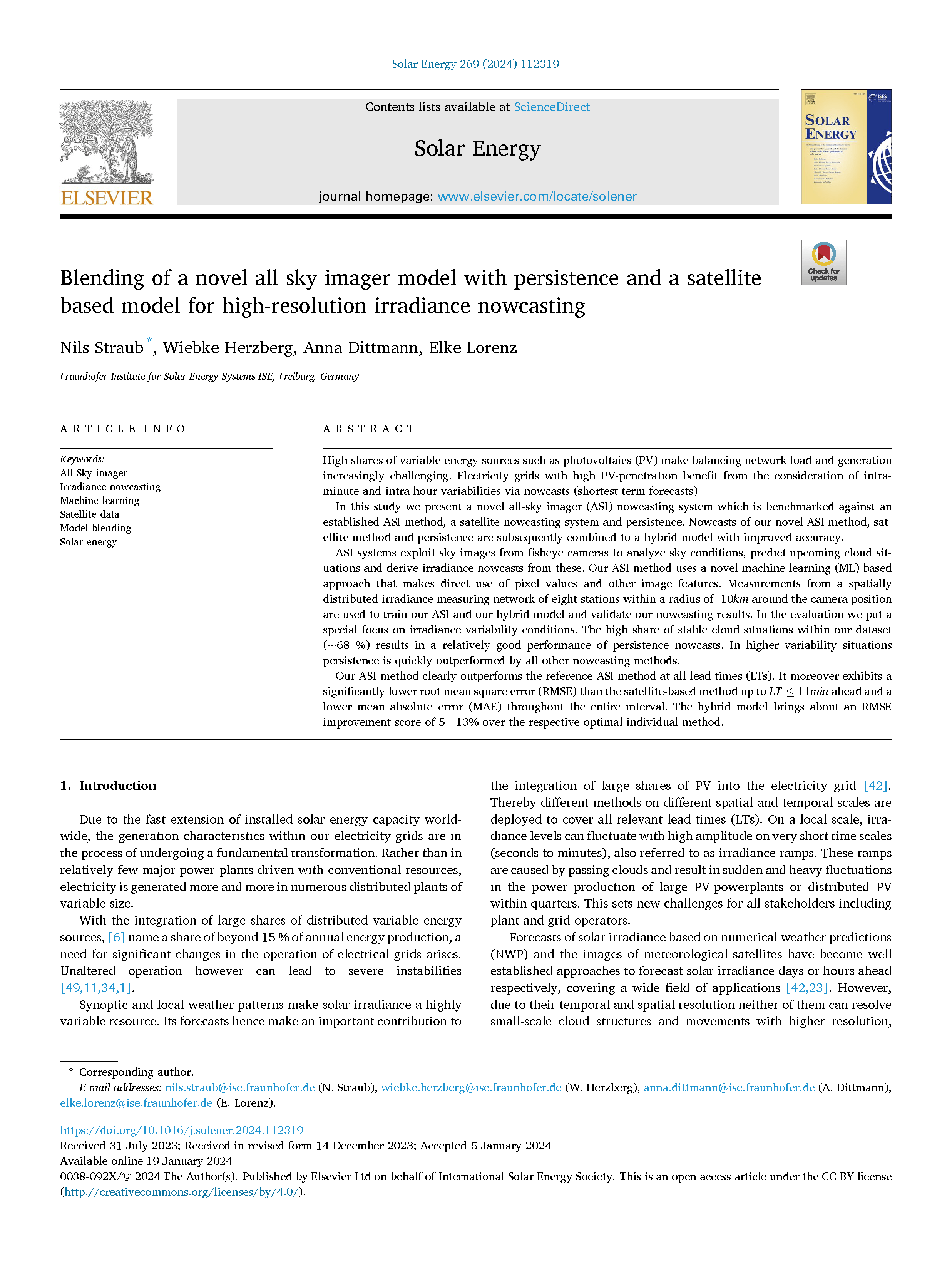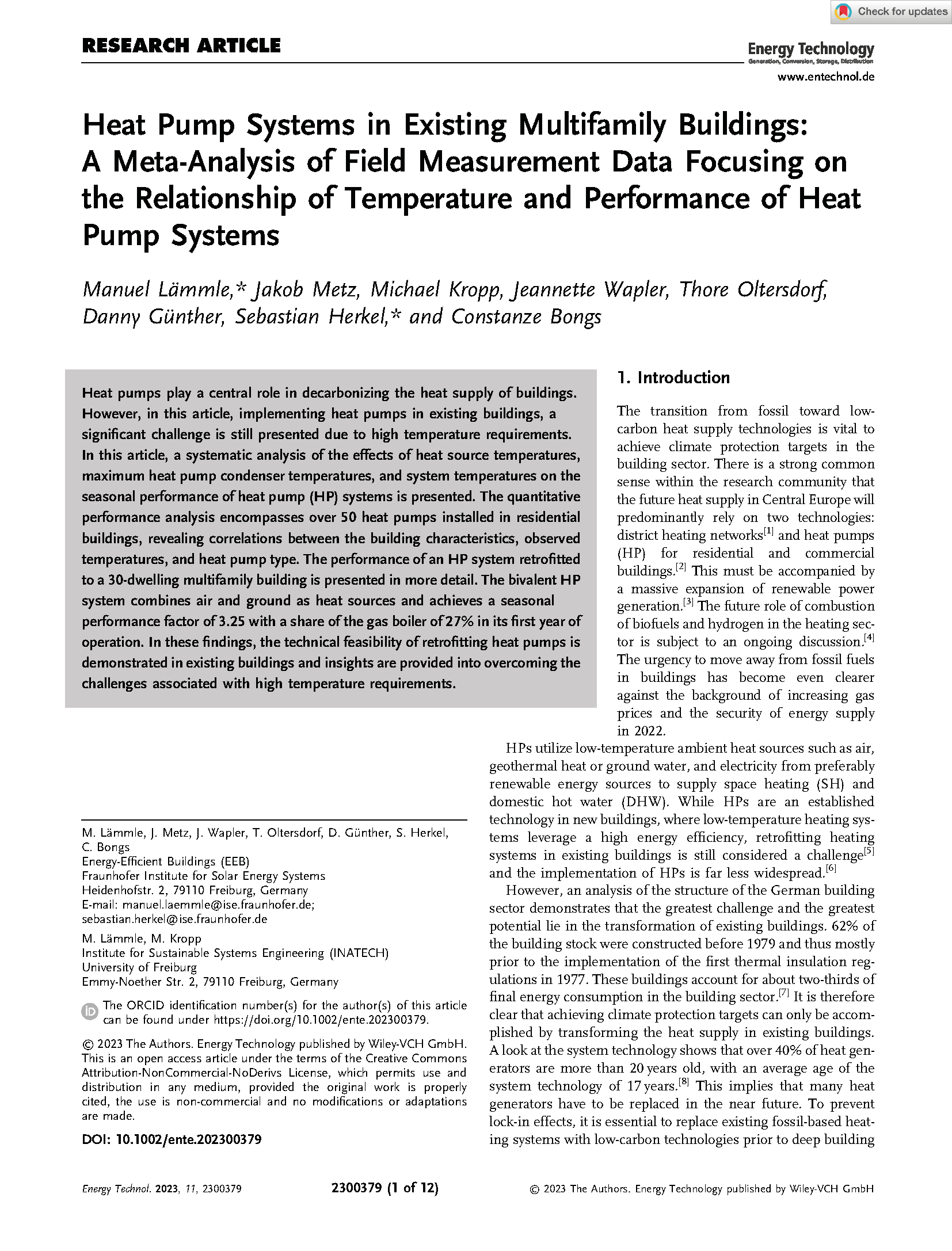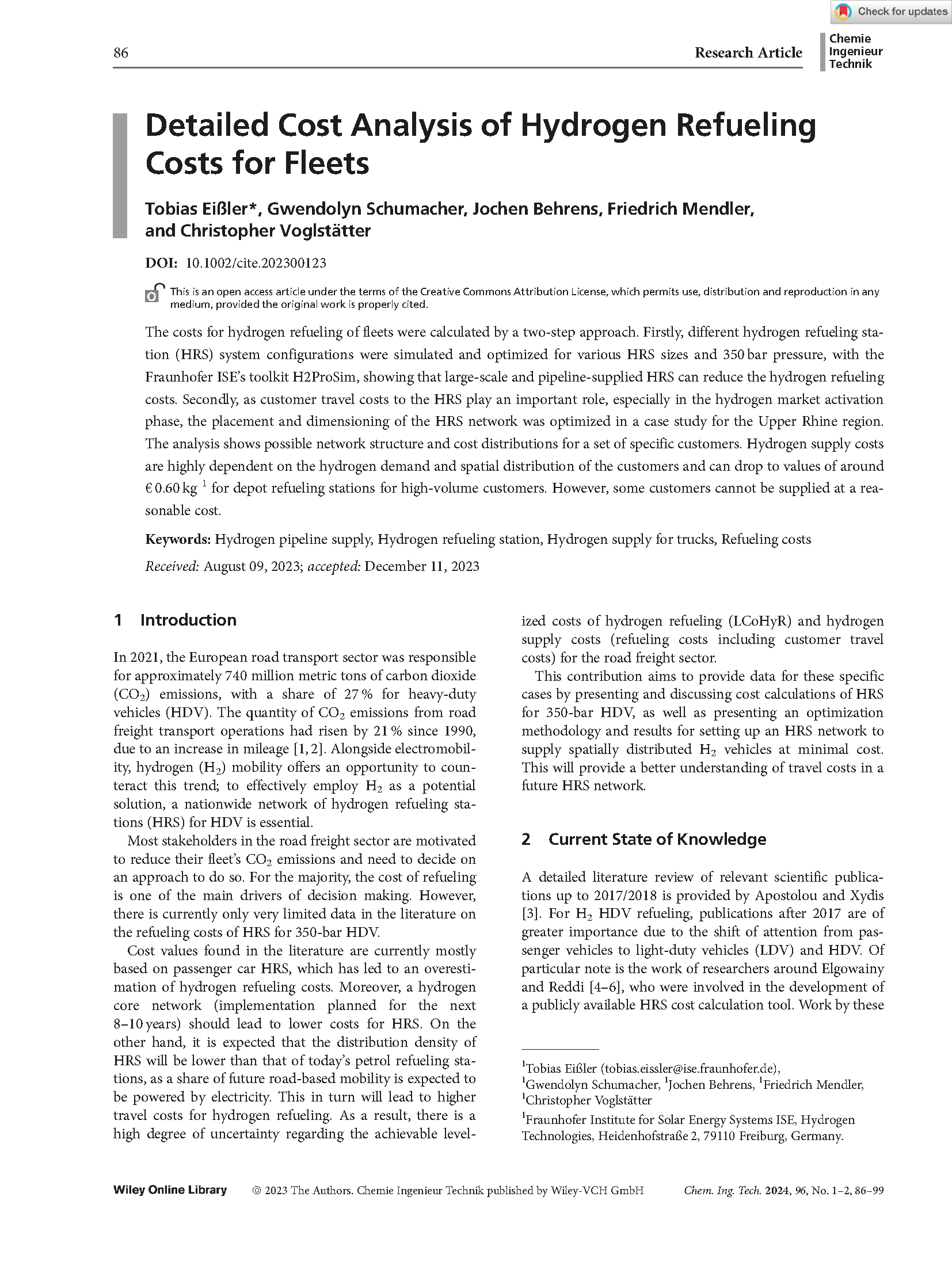Blending of a novel all sky imager model with persistence and a satellite based model for high-resolution irradiance nowcasting
Division Power Solutions

Solar Energy | Volume 269 | February 2024 | 112319
Nils Straub, Wiebke Herzberg, Anna Dittmann, Elke Lorenz
In this paper, we present a novel all sky imager (ASI) method for high-resolution irradiance forecasting. Our AI-based model uses pixel values and various other image features from ASI images directly to calculate irradiance forecasts within a radius of about 10 km around the camera position.
Throughout the test period (May 2021-April 2022), our novel method showed significantly lower forecasting error than various established reference models. By blending our new model with the reference models into one compact hybrid forecasting model, we were able to significantly reduce forecasting errors even further.


